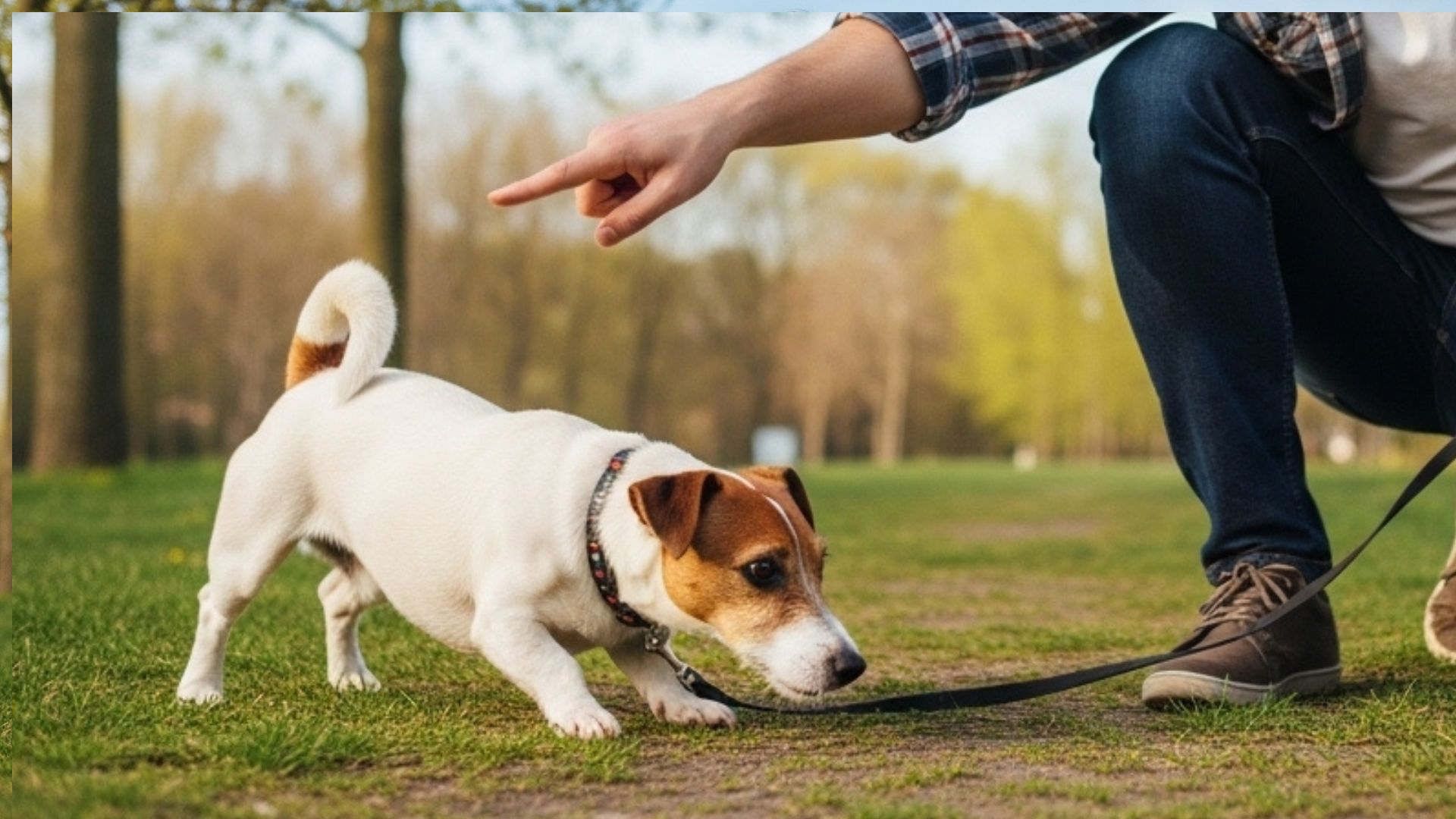Bringing a dog into your life can be one of the most rewarding experiences, but not all breeds are equally easy to train. While some dogs thrive on commands and quickly adapt to household rules, others have a stubborn streak, a strong independent nature, or simply a mind of their own.
This doesn’t make them bad dogs; it just means they may require more patience, consistency, and experience from their owners. For first-time dog parents or those looking for a low-effort training experience, choosing the right breed makes all the difference.
In this article, we’ll take a closer look at seven dog breeds that, despite their many lovable qualities, are notoriously challenging to train. Whether it’s because of their strong-willed personalities, high energy, or natural instincts, these breeds are better suited to patient owners who don’t mind putting in the extra work.
Best Dog Breeds To Avoid If You Want Easy Training
1. Basenji
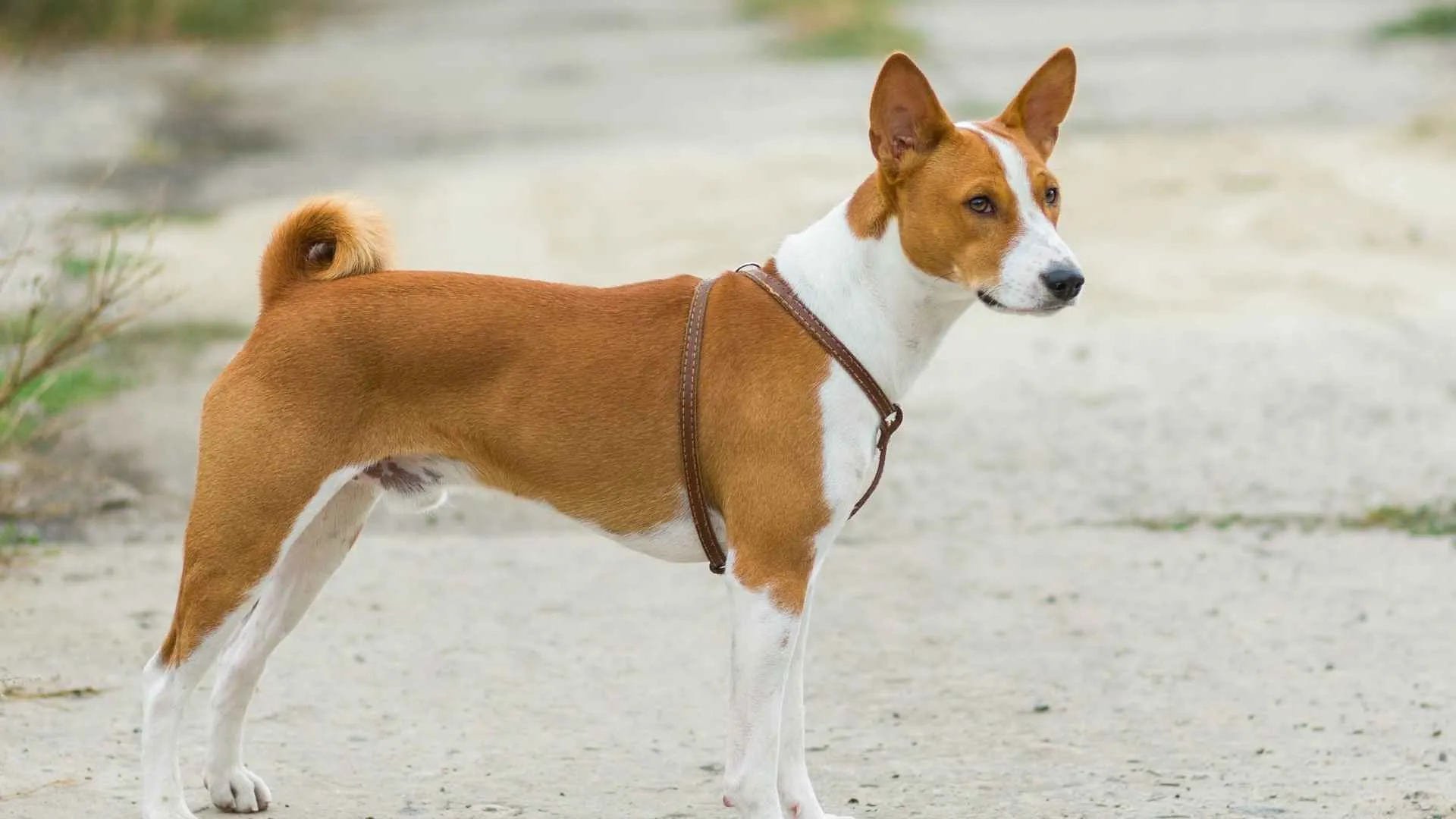
The Basenji is often called the “barkless dog,” thanks to its unique yodel-like sound. Originating from Africa, this breed has a long history as a skilled hunting companion. Its independence can make training more demanding, as Basenjis prefer thinking for themselves rather than following directions.
These dogs are energetic and playful, needing plenty of exercise to prevent restlessness. They thrive in active households that can provide mental challenges alongside daily activity. Without enough stimulation, they may turn to mischievous behavior.
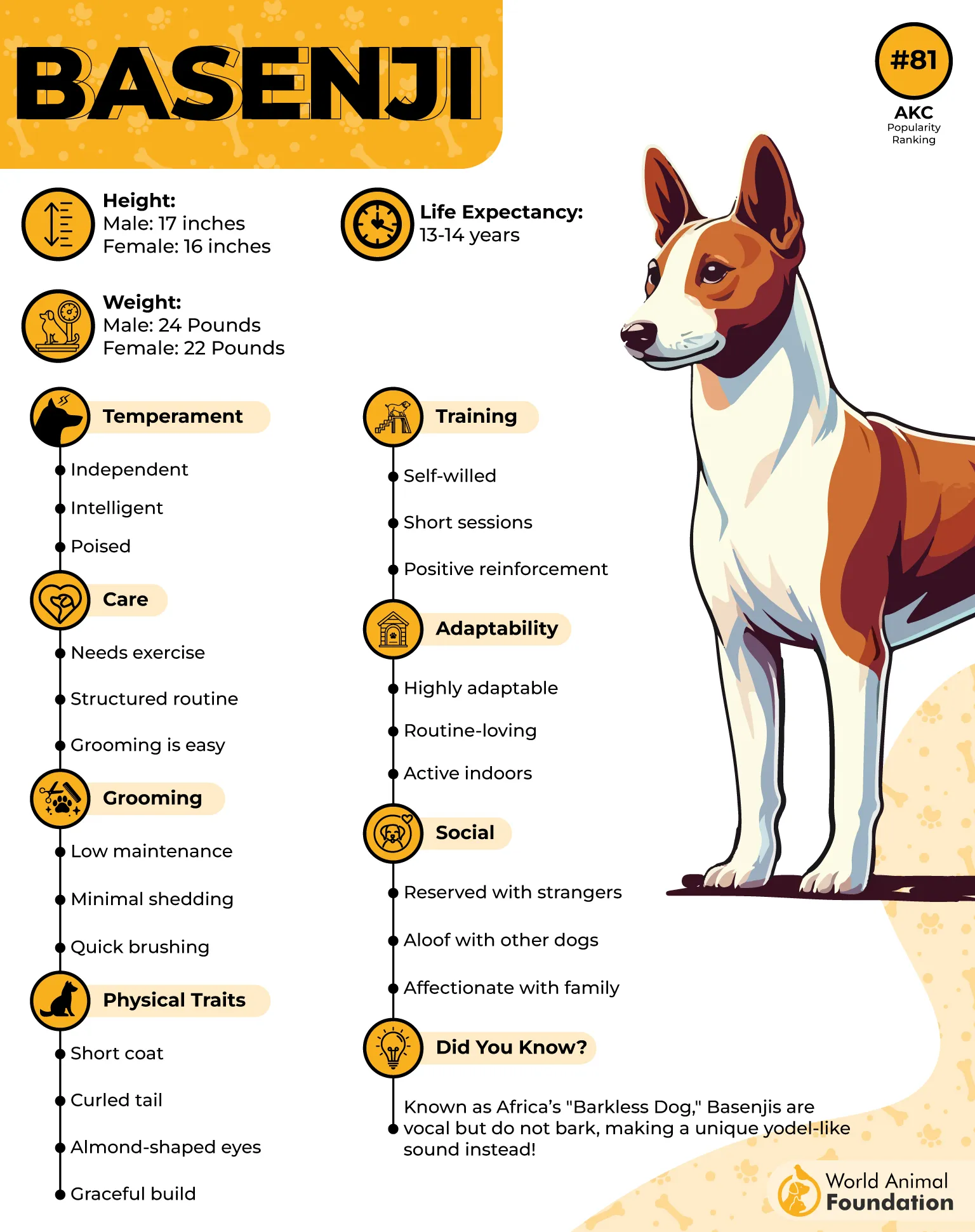
Grooming a Basenji is refreshingly simple because of their short coat and natural tendency to clean themselves. They are nearly cat-like in their habits, which appeals to owners who prefer a low-maintenance pet. Their elegance and sleek build give them a distinctive appearance.
Training challenges with this breed stem from their strong-willed personality. While they’re not disobedient by nature, they lose interest quickly and dislike repetitive drills. First-time owners may find them difficult compared to more compliant breeds.
Still, Basenjis bond deeply with their families. They may be aloof with strangers but form strong attachments at home. A patient, confident owner who provides consistent training will see the best in this breed.
Quick Tips
Keep training sessions short, fun, and rewarding.
Provide daily runs or agility games to satisfy energy levels.
2. Basset Hound
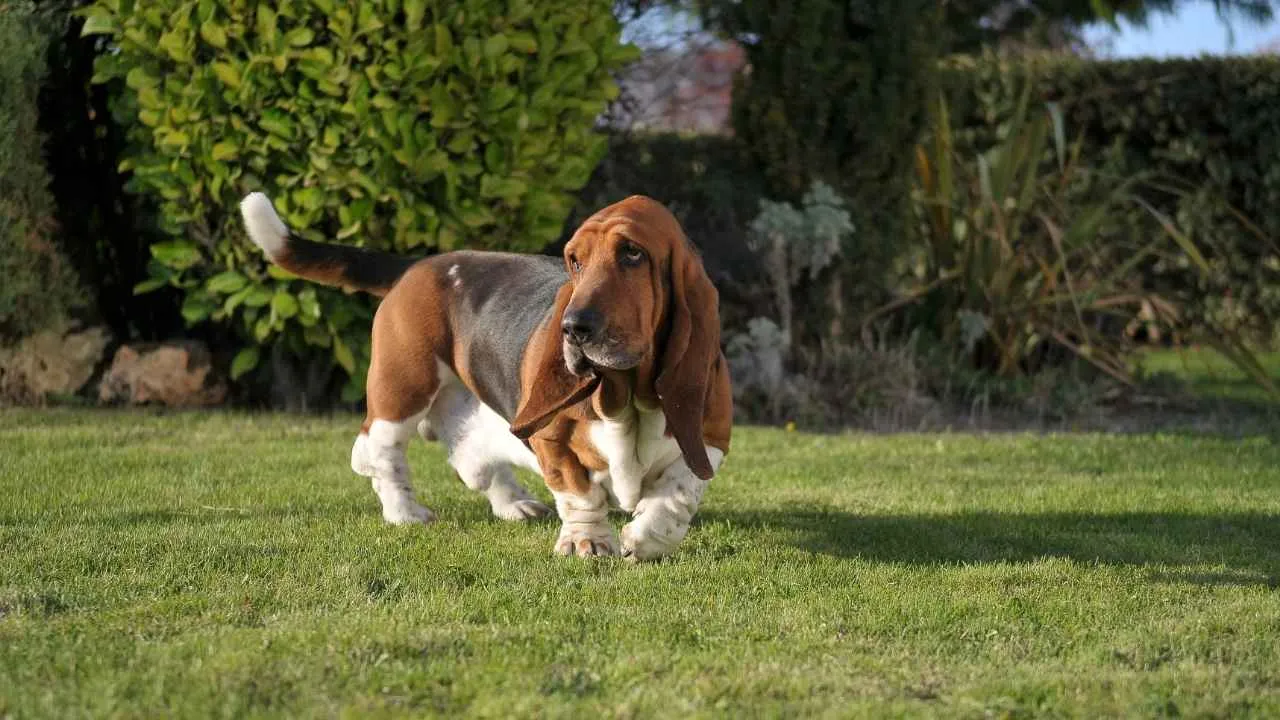
Basset Hounds are instantly recognizable with their droopy ears and soulful eyes. Originally bred for tracking, their noses dominate their behavior, making them excellent at following scents but slower to respond to commands. This strong instinct often distracts them during training sessions.
Despite their laid-back appearance, Basset Hounds enjoy outdoor adventures. They are steady walkers, not sprinters, and make wonderful companions for relaxed strolls. However, their determination when on a scent trail can make recall unreliable.
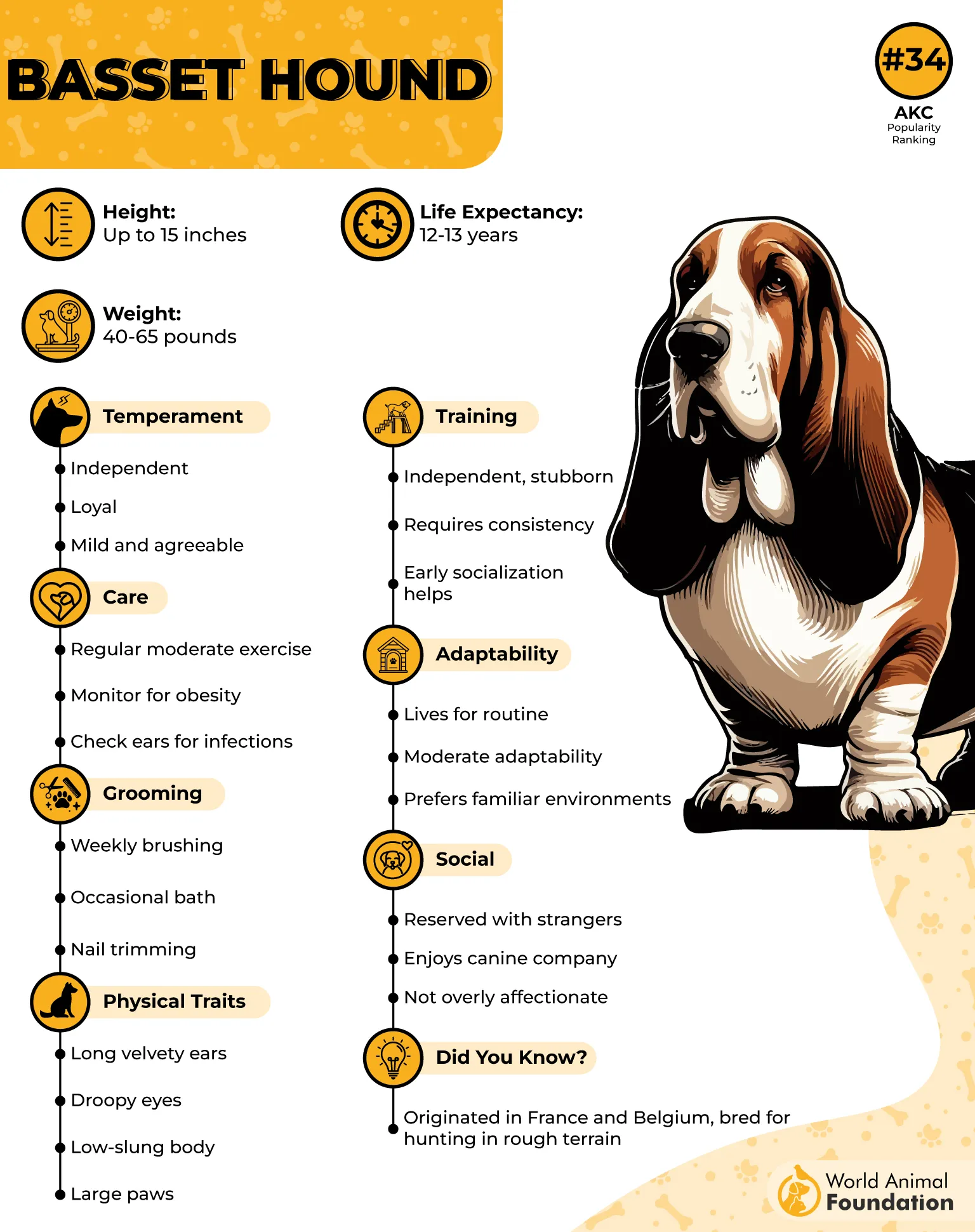
According to the AKC, these dogs are affectionate and thrive in a family environment. They love companionship and dislike being left alone for long periods. Their even temperament makes them especially good with children.
Training can be tricky because of their stubborn streak. Bassets aren’t motivated to please and may need creative, reward-based methods to keep them engaged. Owners seeking a quick-learning breed may find them frustrating.
Health-wise, their long ears require regular cleaning, and their build makes them prone to joint problems. Responsible care and proper exercise help them stay comfortable and happy.
Quick Tips
Use food rewards to maintain attention during training.
Keep walks moderate but regular to support joint health.
3. Beagle
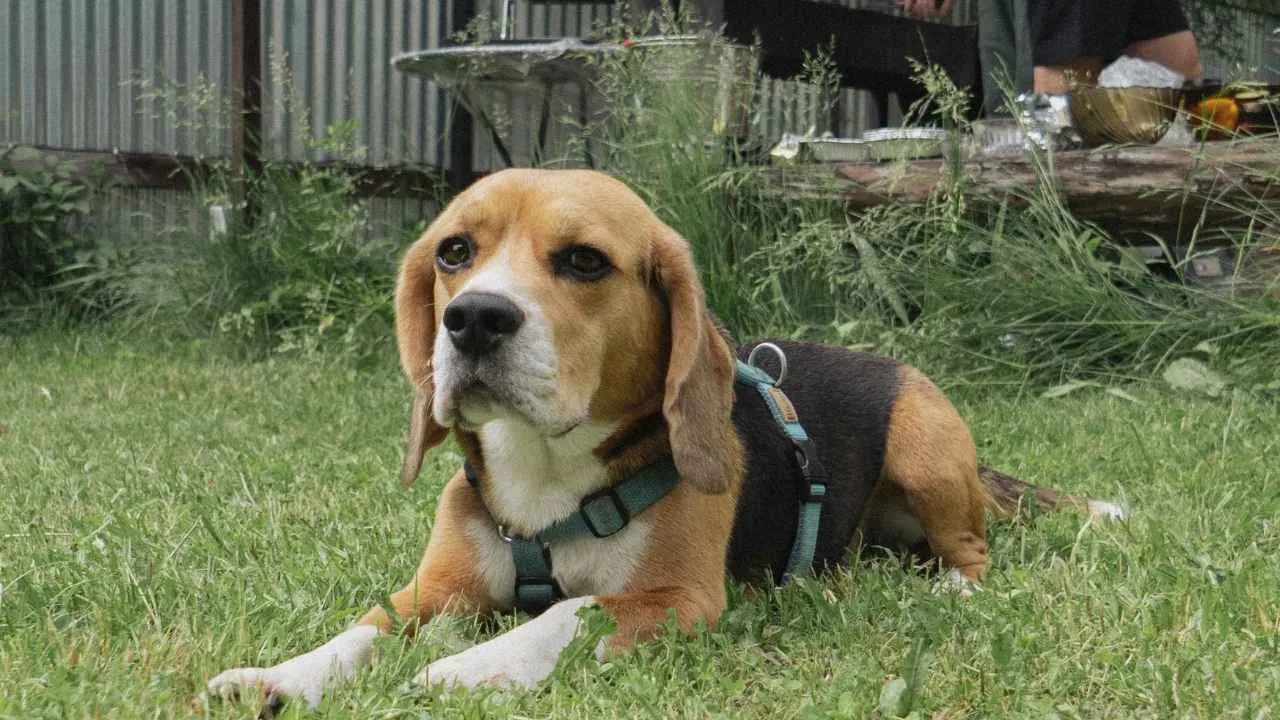
Beagles are lively hounds with a boundless sense of curiosity. Their incredible sense of smell was developed for hunting, and they often become distracted by scents during walks or training. This trait is charming but makes obedience more complicated for beginners.
Families love Beagles for their affectionate nature and cheerful personality. They are playful with children and typically get along well with other pets. This social temperament makes them one of the most popular breeds worldwide.

High energy levels mean Beagles need daily exercise and mental enrichment. If their needs aren’t met, they may develop habits like howling, digging, or chewing. Long walks and scent-tracking games are excellent outlets.
PetMD states that training requires persistence and patience. Beagles are intelligent but single-minded when focused on smells, so consistency is key. Positive reinforcement works best, especially with food rewards.
They’re also known for their distinctive baying voice. This vocal tendency can be amusing, but may not suit apartment living if neighbors are nearby. With the right environment and dedication, Beagles are loyal and entertaining companions.
Quick Tips
Keep training sessions structured and reward-driven.
Provide puzzle toys or scent-based games to prevent boredom.
4. Siberian Husky

Siberian Huskies are striking dogs with wolf-like looks and piercing eyes. Originally bred to pull sleds over long distances, they have boundless stamina and thrive on daily activity. Without adequate outlets, they may become restless or destructive.
Their personalities are friendly and outgoing, making them sociable companions. They typically enjoy the company of people and other dogs, though their high prey drive means small animals may not be safe around them. Families who lead active lifestyles often find them a good match.
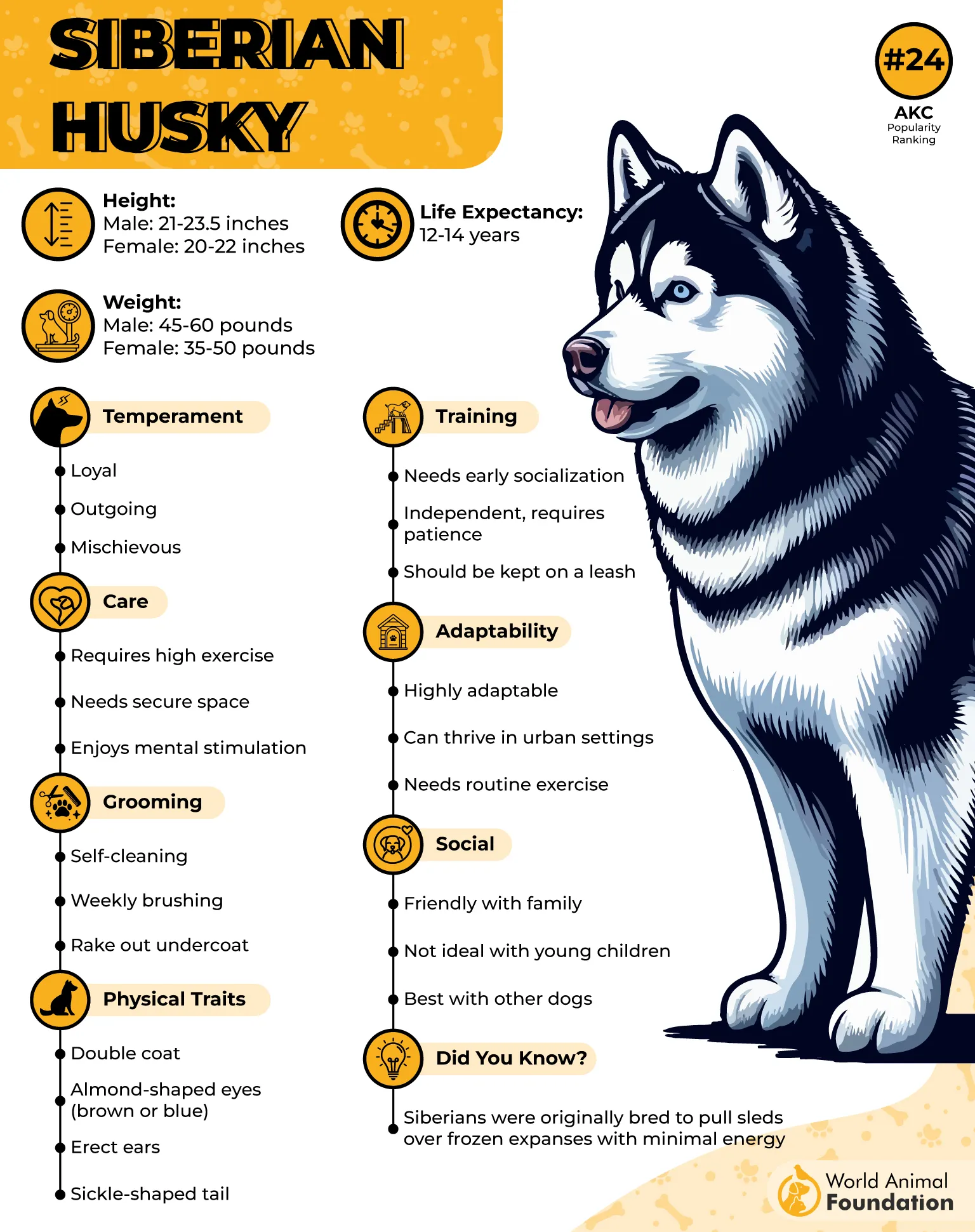
Training a Husky can be a challenge due to their independent streak. They are intelligent but not always eager to please, often testing boundaries. This makes them less ideal for owners who want an obedient, easy-to-train dog.
Huskies are notorious escape artists. With their problem-solving skills and athleticism, they can jump fences or dig under barriers with surprising ease. Secure enclosures are essential for keeping them safe.
Their thick double coat requires regular grooming, especially during seasonal shedding. While beautiful, it also means Huskies are better suited to cooler climates. Owners should be prepared for consistent brushing to manage the fur.
Quick Tips
Provide at least two hours of daily exercise.
Use secure fencing to prevent escapes.
5. Jack Russell Terrier
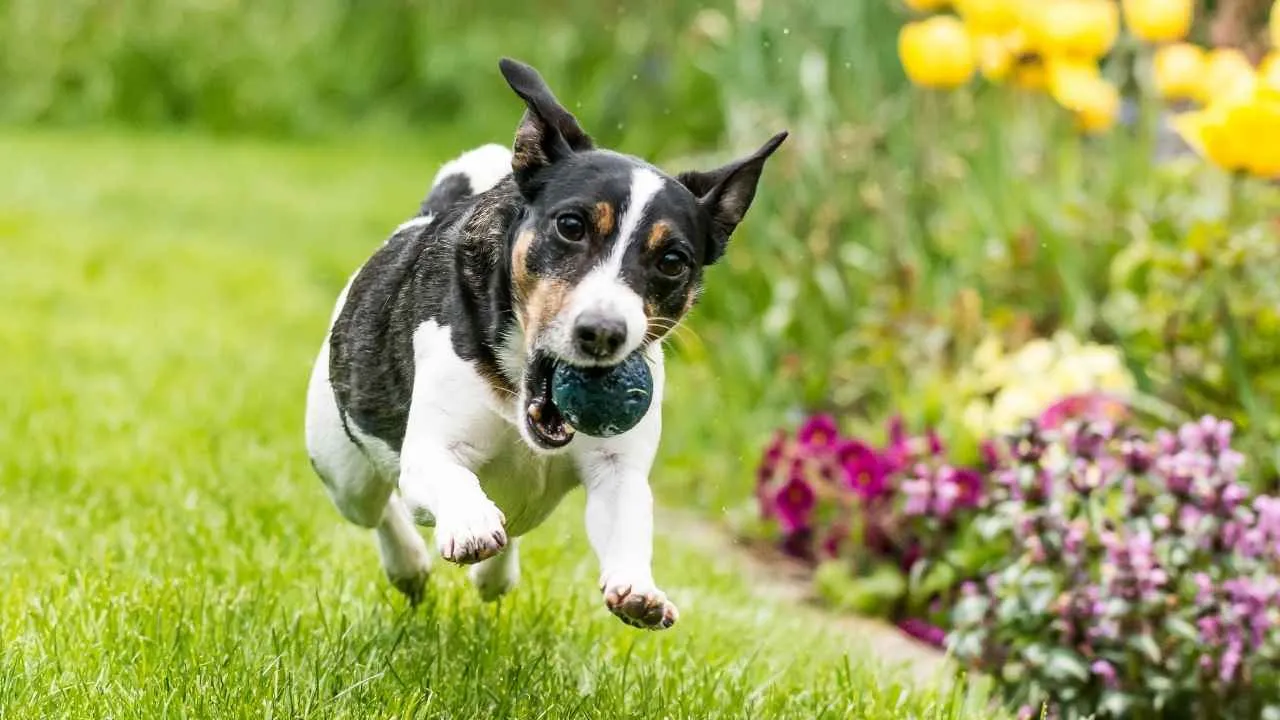
The Jack Russell Terrier may be small, but its energy levels are immense. Bred for fox hunting, these dogs have a fearless attitude and a natural drive to chase. Their strong prey instincts can make leash training and recall particularly challenging.
They are lively companions who thrive in busy households. Owners who enjoy outdoor activities will appreciate the Jack Russell’s stamina and enthusiasm. However, without enough engagement, they may develop destructive behaviors like digging or barking.
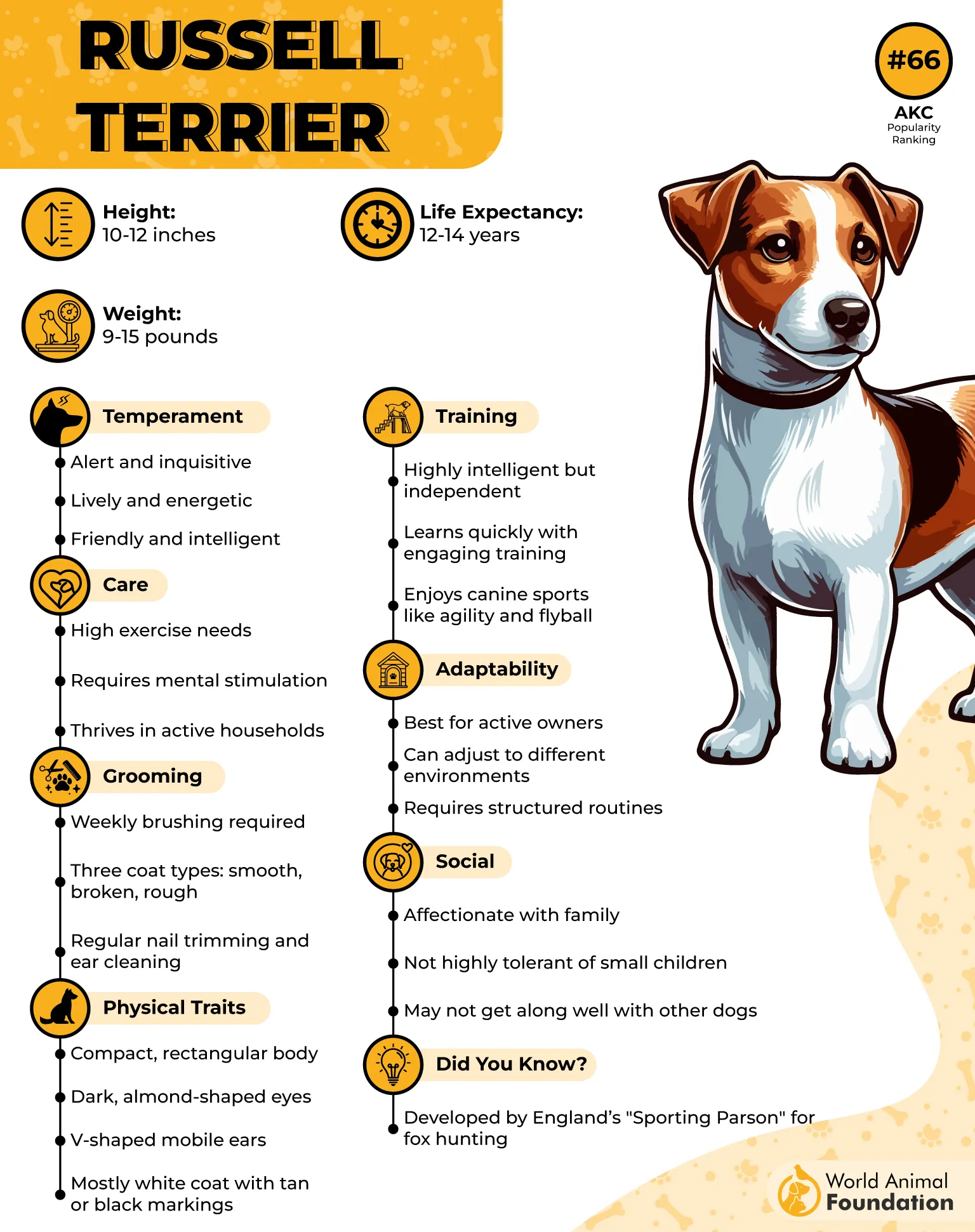
When it comes to obedience, their sharp minds work both for and against them. They pick up commands quickly but often choose when to listen. This willful nature makes them one of the more difficult terrier breeds to train consistently.
Despite their stubborn streak, Jack Russells are affectionate and loyal to their families. They form close bonds with their owners and can be wonderful pets for those willing to put in the work. Their spirited personality ensures there is never a dull moment.
Regular mental challenges are just as important as physical exercise. Agility sports, fetch, and puzzle games all help keep their active brains occupied. Without these outlets, boredom can set in fast.
Quick Tips
Keep training varied and fast-paced to hold attention.
Give daily exercise paired with mental stimulation.
6. Rottweiler
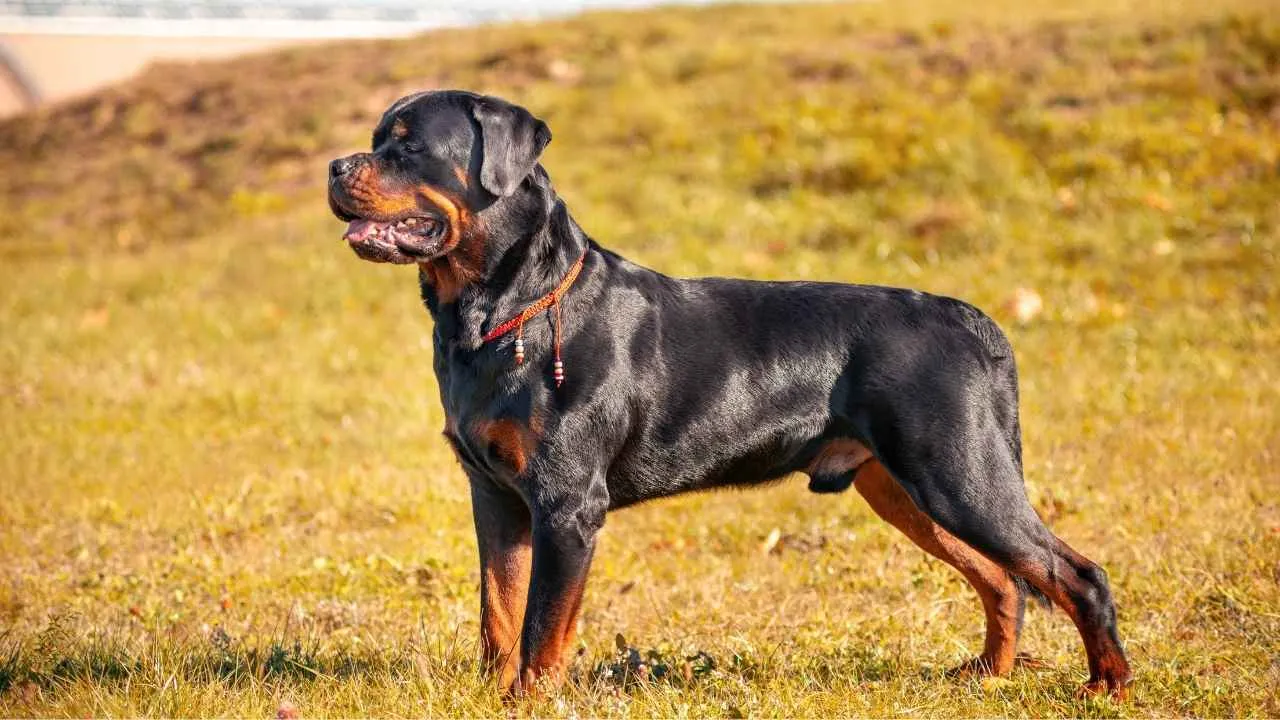
Rottweilers are powerful working dogs with a long history as guardians and herders. Their strength and confidence make them effective protectors, but they require firm and consistent training from an experienced owner. Without proper guidance, their dominance can become difficult to manage.
Despite their imposing presence, Rottweilers are affectionate with their families. They are loyal and often develop deep bonds with their owners, showing a gentle side at home. Early socialization is crucial to ensure they remain well-rounded companions.
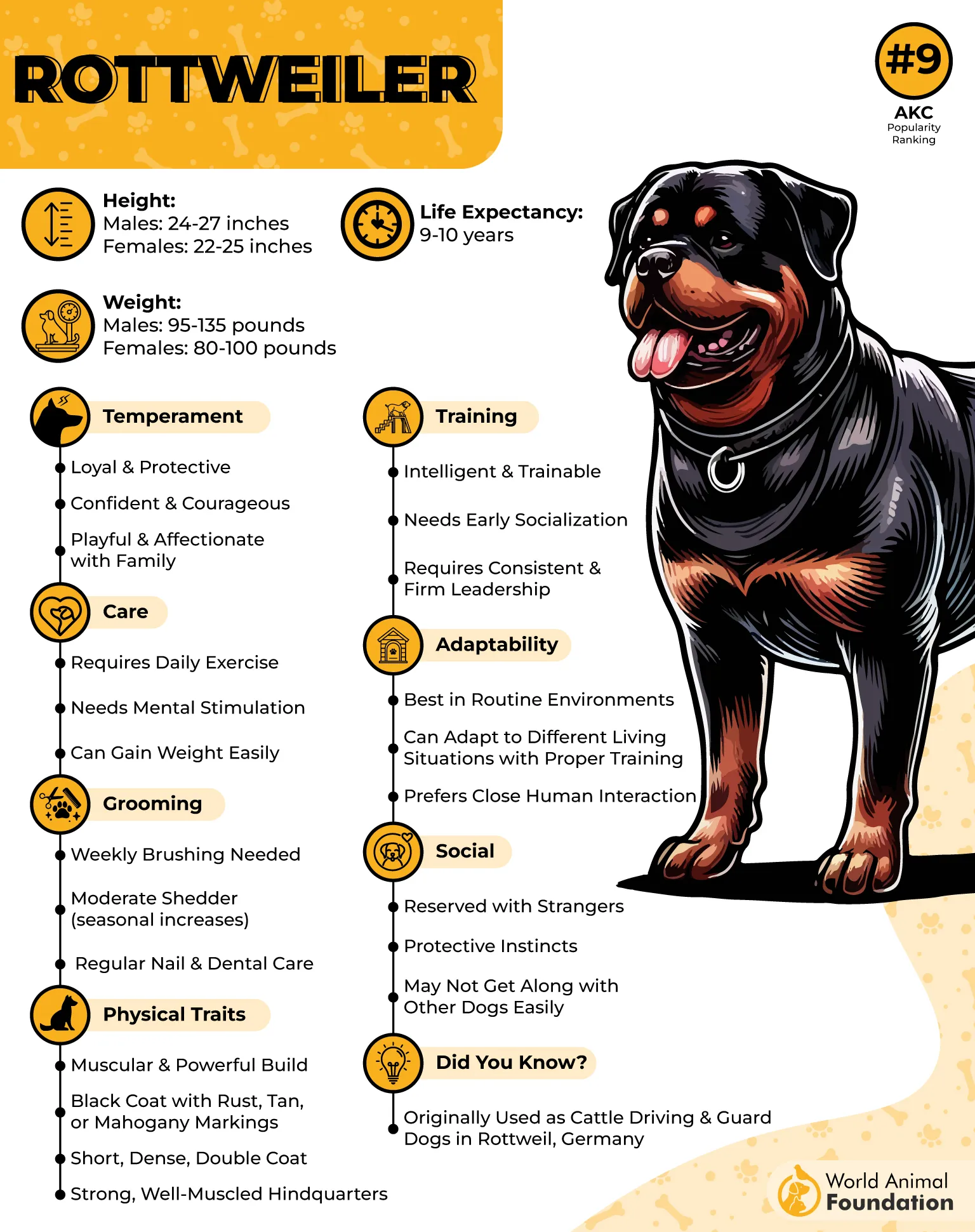
Training this breed is rewarding but not simple. Rottweilers are intelligent and quick learners, yet their protective instincts and independent mindset can make them headstrong. They need clear boundaries and a handler who is confident and consistent.
These dogs are also high-energy for their size and require regular exercise. Long walks, structured play, and obedience work are necessary to keep them balanced. Mental challenges like advanced training tasks help channel their intelligence.
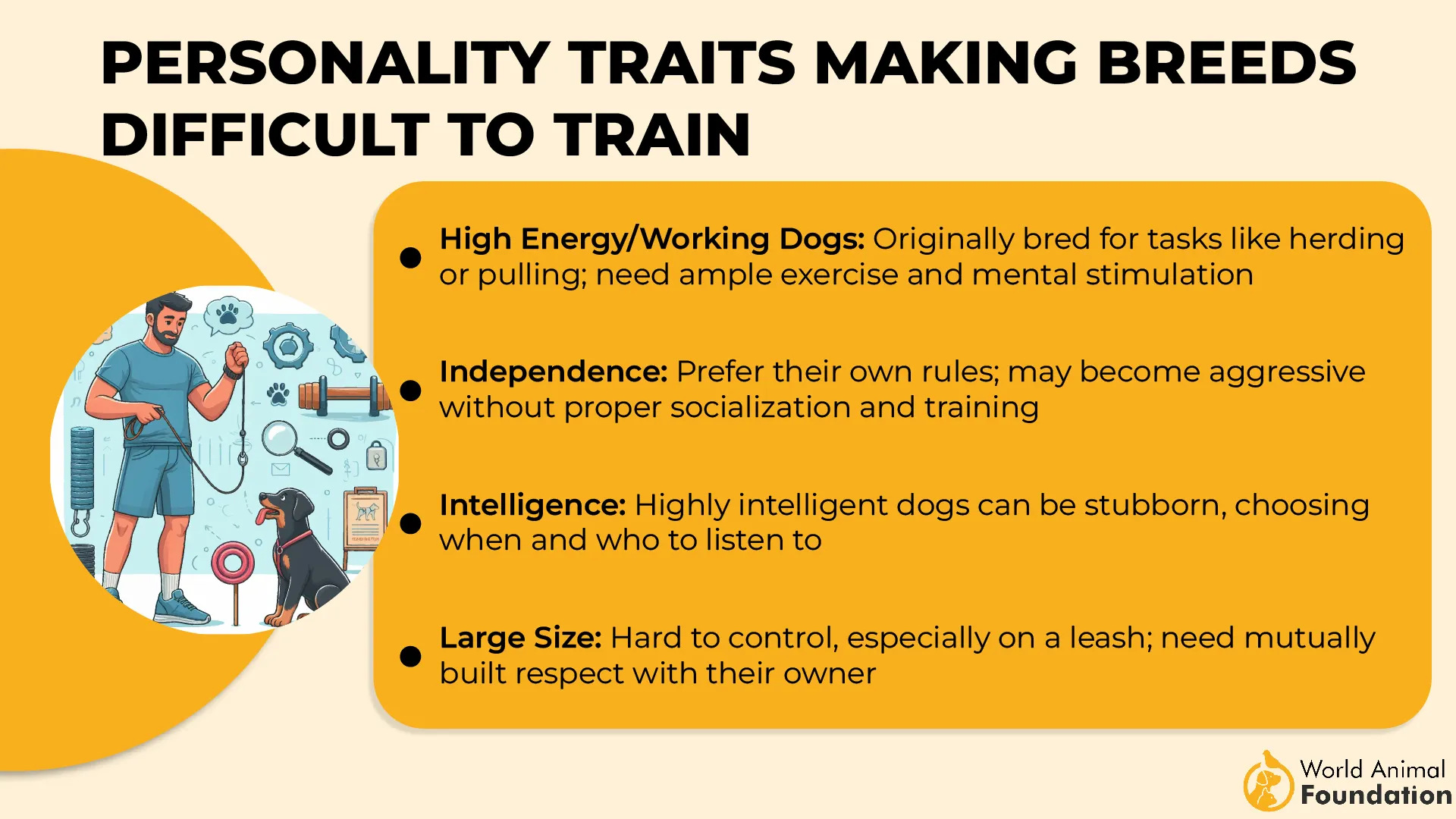
Health considerations include monitoring for hip dysplasia and heart issues, common in larger breeds. Responsible ownership and regular veterinary care are essential for their long-term well-being.
Quick Tips
Begin socialization and obedience training early.
Provide structured activities that challenge both mind and body.
7. Chinese Shar-Pei

The Chinese Shar-Pei is instantly recognizable with its wrinkled skin and distinctive muzzle. Originally bred as a guard and farm dog, it retains strong protective instincts today. This makes them wary of strangers and highly loyal to their families.
As per Britannica, they are generally calm and affectionate with those they trust. Shar-Peis bond closely with their owners, preferring a quiet household where they can feel secure. Their reserved nature means they aren’t typically outgoing with new people.
Training a Shar-Pei can be complex because of their independence. While intelligent, they often resist commands they find unnecessary. Owners who expect quick results may find this breed frustrating to train.
Their unique coat and skin folds require consistent care to prevent irritation. Regular cleaning and attention to grooming are necessary to avoid skin problems. This makes them a higher-maintenance breed in terms of health.
Shar-Peis are not overly energetic, but they do benefit from daily walks and light play. Balanced activity helps maintain their health and provides mental stimulation. With the right care, they make devoted and protective companions.
Quick Tips
Keep training calm, consistent, and patient.
Clean and monitor skin folds regularly to prevent issues.
Conclusion
Choosing the right dog breed is about more than appearance; it’s about matching personality, lifestyle, and training expectations. The breeds covered above can all be wonderful companions, but they often rank among the hardest dog breeds for novice owners to manage. Their independence, strong instincts, or sheer energy levels mean they are difficult to train without patience and a firm owner willing to put in consistent effort.
Other breeds, such as hunting dogs, guard dogs, or strong-willed dogs like the Chesapeake Bay Retriever, English Bulldog, Chow Chows, Pug, and Saint Bernard, also tend to challenge dog owners when it comes to mastering basic commands. These active dogs can be hard-headed, and if not trained properly from puppyhood, they may develop habits that are tough to reverse.
Generally speaking, any pup can become a great companion if given the right environment, structure, and love. For a person considering dog ownership, the key is to choose wisely, work with a reputable breeder, and remember that even the hardest dogs, when properly trained, can turn into sweet, loyal family members who fit happily into the house and bond deeply with humans and kids alike.


